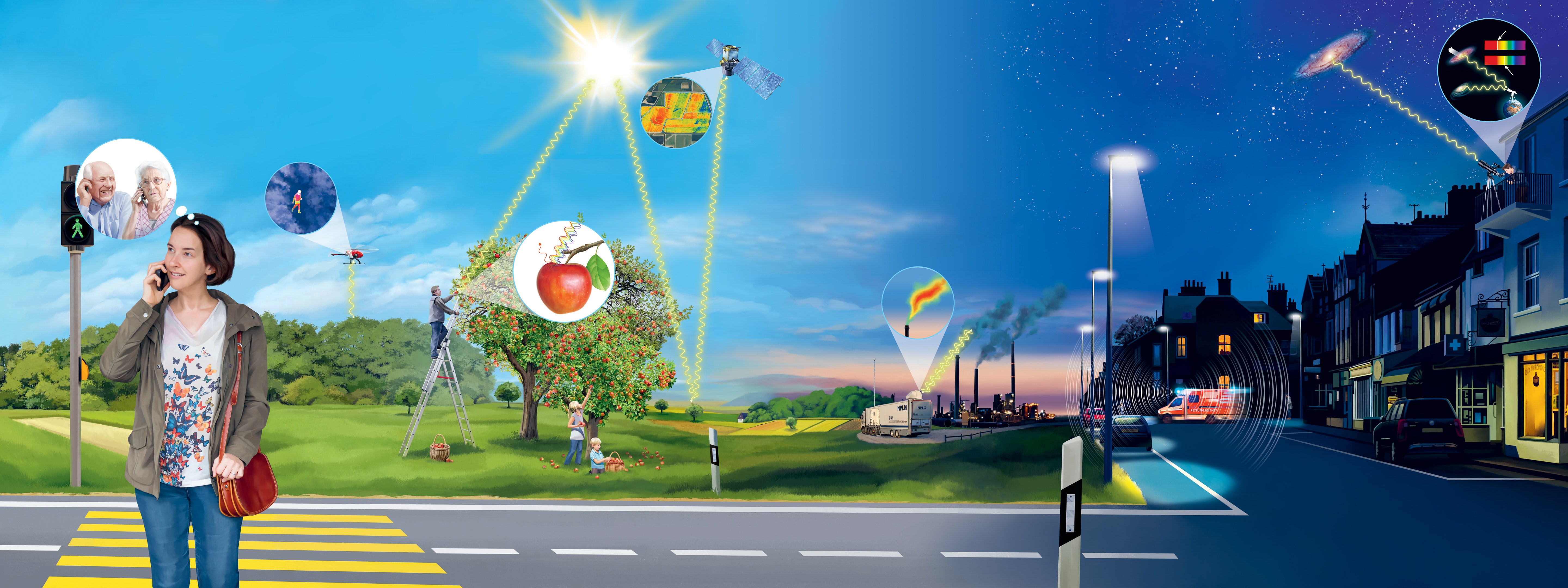Hunting for Clues
Using waves for identification thanks to their frequency content
The frequencies at which a wave oscillates are like a fingerprint. Therefore, they can be used both to identify the
object from which the wave was emitted and to find out what the wave has come into contact with – for example with
people, plants or gases.

Detecting Movement
When an ambulance approaches us, we hear its siren as a high-pitched sound. When it moves away from us, the pitch is lower. In both cases, the ambulance emitted the same sound. However, In the first case, the waves in front were ‘squeezed’ because of the movement so the frequency became higher. In the second case, the waves in the back were ‘stretched’ so the frequency became lower.
Such frequency changes are typical for moving objects. They are also observed in the light of stars from distant galaxies: the starlight is redder when it reaches us. This red shift occurs because the galaxy is moving away from us, which ‘stretches’ the light. It therefore also serves as an indication that the universe is expanding.
Exploring from Afar
A red apple appears red because its skin reflects the red part of the sunlight and absorbs the other colours (i.e. it ‘swallows’ them). A green apple, on the other hand, reflects the green part of the sunlight. The colour of something we see therefore depends on how much it reflects or absorbs the different colour components (or frequencies).
We make use of this when exploring the Earth with satellites, aeroplanes and drones. They measure which parts of the sunlight are reflected or absorbed by a surface. But it is not only the visible range that is of interest to us. In the infrared range in particular, we can distinguish between plant species and even determine their state of health. To do so, false-colour images are created by assigning ‘false’ colours to the frequency ranges. The colours are chosen in such a way that relevant differences become apparent – no matter how small they are. This often results in very colourful and thus informative images.
Waves can also be used to measure the composition of the air. A device sends out waves with specially selected frequencies. These are reflected by the air particles and show a signal typical for each component. Thus, for example, exhaust gases released by factories can be detected and monitored.
Who is Talking?
Our voice is unique and unmistakable. Its pitch is determined by the vibration of the vocal folds in the larynx. In a woman’s voice, they vibrate about twice as fast as in a man’s voice. Furthermore, the mouth, nose and throat change the sound waves formed in the larynx. In this way, a combination of frequencies creates the individual sound by which we can recognise a person.
Technology can make use of this. For example, to unlock a mobile phone with speech, the owner’s voice must first be stored as an acoustic fingerprint. To do this, a voice sample is broken down into its frequency components. When the owner gives the spoken command to unlock, their voice is compared with the stored voice profile. Its main characteristics must be the same. However, a certain variability must be allowed; after all, you should be able to unlock your phone even when you have a cold or are sitting in a noisy restaurant.
Visible light also has ‘fingerprints’. These are the different frequencies that we see as colours and the reason why we can distinguish the green traffic light from the red one. It also works outside the visible range: a person can be detected in the forest because their body, unlike the trees, emits heat – something we can measure with infrared cameras.